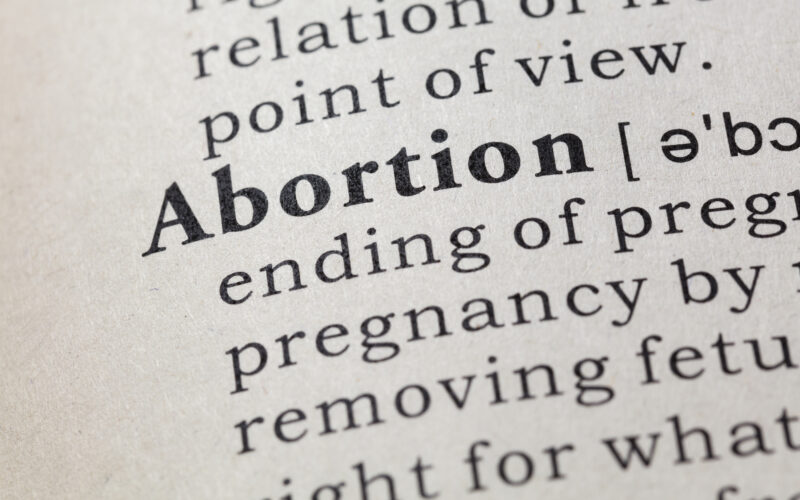Even during the wildest times of my youth, I would never have wanted to be the cause of an abortion. Yet, there is a possibility that I have been responsible for one, unaware. How? Because of contraceptive methods that my wife and I used before we knew about the natural methods.
While women’s positions on the legal and moral question of abortion vary, most would agree that full disclosure of the risk of abortion is a basic right of women using contraceptive drugs.
However, studies conducted among women 18-49 in the United States[i] and in six European countries[ii] showed that about 8 out of 10 women do not know about the potential of some contraceptives to cause abortion.
The same studies shows that 75% of them would want to be informed about any reasonable possibility of this happening, and 3 out of 10 women would choose not to use a contraceptive that would risk causing an abortion.
Let’s look at the facts.
The right to informed consent
Being fully informed by the provider about a drug as potent as hormonal contraceptives is a basic and well recognized right of patients. The World Health Organization recommends that patient information about birth control methods include effectiveness, mechanisms of action, side effects, health risks and benefits, correct use and reversibility. In practice, it doesn’t happen. In general, physicians frequently don’t take the time to inform patients even of the side effects of medication they prescribe[iii], let alone the mechanisms of these powerful drugs.
The mechanism of some contraceptives includes preventing implantation of an embryo
In order to reach high effectiveness rates, hormonal contraceptives rely on two main mechanisms: prevention of the fertilization of a woman’s egg (prefertilization effect), and prevention of the implantation of an embryo by the modification of the lining of the uterus (postfertilization effect). The second mechanism is what we’re concerned with here. If ovulation occurs and if the egg is fertilized by a sperm, which sometimes happens, especially with today’s low-dose pills[iv], the resulting embryo will travel to the uterus and attempt implantation. However, scientific literature shows that oral contraceptives, implants, the shot, the patch[v] and IUDs make the lining of the uterus inhospitable to it. It is also clearly stated in the labels of these contraceptive methods[vi].
Is this an abortion?
You may not agree that human life starts at conception, but rather at implantation, when the embryo attaches to the lining of the uterus about 6 days after conception. In which case, you wouldn’t consider the process described above an abortion. The American College of Gynecologists and Obstetricians (ACOG) defines pregnancy as starting at implantation. The Guttmacher Institute, the former research arm of Planned Parenthood, explains, “Pregnancy is established when a fertilized egg has been implanted in the wall of a woman’s uterus. The definition is critical to distinguishing between a contraceptive that prevents pregnancy and an abortifacient that terminates it.” Still, some studies show that a majority of people believe life does start at conception.
But while start-of-pregnancy views may differ, the start of human life is not actually a matter of opinion or belief. In a remarkable scientific paper[vii], Maureen L. Condic, Associate Professor of Neurobiology and Anatomy at the University of Utah School of Medicine, writes: “The scientific evidence supports the conclusion that a zygote is a human organism and that the life of a new human being commences at a scientifically well defined ‘moment of conception.’ This conclusion is objective, consistent with the factual evidence, and independent of any specific ethical, moral, political, or religious view of human life or of human embryos.”
Because abortion is legal, this conclusion leaves the user of contraceptives with a personal moral choice about what may happen to the embryo once it is created as a result of the relatively small, yet real, possibility of the failure of a contraceptive’s first mechanism, the prevention of fertilization. But in order to freely exercise this moral choice, a woman has to be informed.
The lack of information
Full disclosure to all women about this possibility seems essential to ensure proper informed consent. Yet women don’t know about these risks, as the table below tells us[viii]. Women in the United States are the most informed and only 22% of them know. In France (my homeland), it’s only 7%. Yet, 72% of US women want to know, as in most other countries. And the reality is that if women knew, not all, but a large number of them would not use methods that have a risk of postfertilization effect or abortion.
| Country |
% aware of possible postfertilization effect of oral contraceptive |
% want to be informed about postfertilization effect of any birth control method |
% would not use a birth control method with postfertilization effects |
| USA |
22.3% |
71.8% |
53.4% |
| Spain |
7% |
80% |
44.8% |
| Germany |
6.5% |
77.4% |
47.2% |
| France |
7.4% |
74.8% |
22.8% |
| United Kingdom |
19.7% |
76.4% |
24.6% |
| Romania |
5.3% |
65.2% |
47.1% |
| Sweden |
19.3% |
71.2% |
16.7% |
These facts are important for medical professionals to know because they point to a real disconnect between them and their patients. It is also important for our readers to know so that they may be able to make a choice consistent with their moral beliefs.
What to do
If you’re currently using a contraceptive method described above and are concerned with the risk of abortion, here is what you can do:
- Check the label of your current contraceptive method
- Have a conversation with your partner
- Have a conversation with your doctor about alternatives that guarantee no postfertilization effect
- Consider learning about natural methods, which avoid this risk (learn about them here)
- Share this article with the hashtag #DiscloseAbortionRisks
Back 25 years ago, my wife would have never used the Pill had she known about these risks. It comforts us both, though, to know that with this article we may help others avoid the same mistake.
I want to thank the following medical professionals for conducting this research and sharing their conclusions with Natural Womanhood: Jokin de Irala, MD, PhD, MPH. University of Navarra, Spain; Cristina Lopez-del Burgo, MD, PhD. University of Navarra, Spain; Joseph B. Stanford, MD, MSPH. University of Utah, USA. For more information about the research, they can be contacted at jdeirala@unav.es, cldelburgo@unav.es ; jstanford@dfpm.utah.edu.
References
[i] Clinical sample in Utah and Oklahoma: Dye et al. BMC Womens Health 2005;5:11. http://www.ncbi.nlm.nih.gov/pmc/articles/PMC1325031/
[ii] European national representative samples: Lopez-del Burgo et al, Contraception 2012;85:69-77 and Lopez-del Burgo et al, J Clinical Nursing 2013.https://dadun.unav.edu/server/api/core/bitstreams/299a30b8-46c2-418e-9236-025b2ecfca43/content
Spain: Lopez-del Burgo et al, Eur J Obstet Gynecol Reprod Biol 2010;15:56-61. http://dadun.unav.edu/handle/10171/19107
[iii] SOURCES: Tarn DMHeritage JPaterniti DAHays RDKravitz RLWenger NS. Physician Communication When Prescribing New Medications. Arch Intern Med. 2006;166(17):1855–1862. doi:10.1001/archinte.166.17.1855
[iv] http://www.stacommunications.com/journals/cme/2009/09-Sep-09/WNiCRCME.pdf
[v] Hormonal contraception is available in oral contraceptive pills and in newer formulations, including the transdermal patch, the vaginal ring, subcutaneous implants, and IM injections. Prevention of pregnancy is achieved by inhibiting ovulation, fertilization, and/or implantation of an egg. http://www.ncbi.nlm.nih.gov/pubmed/16567739
[vi] http://www.consciencelaws.org/background/procedures/birth014-002.aspx
[vii] When does human life begin, A Scientific Perspective, Maureen L. Condic, https://www.embryodefense.org/MaureenCondicSET.pdf.
[viii] This table was created using data from sources i and ii.






